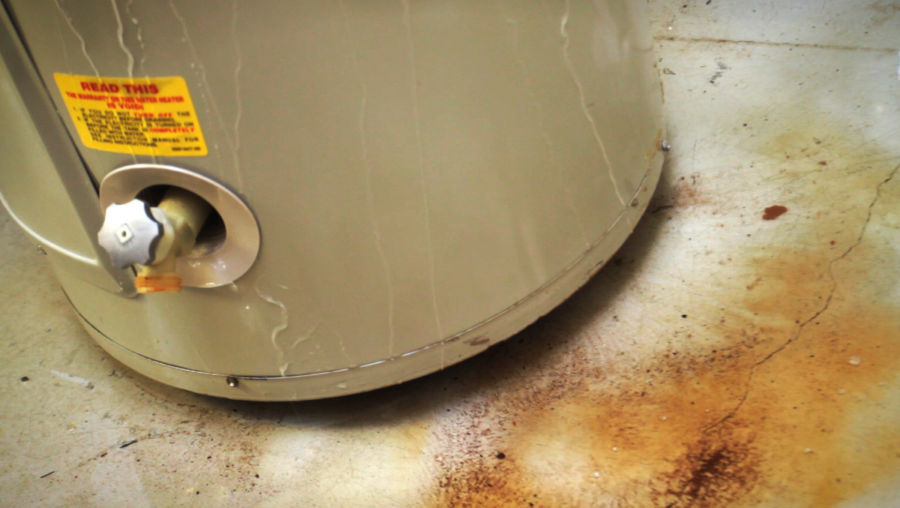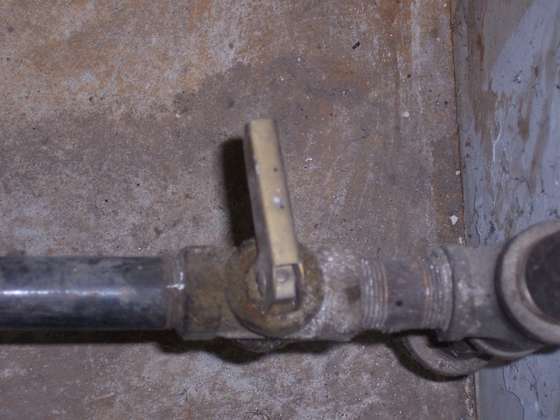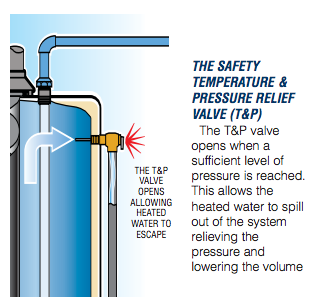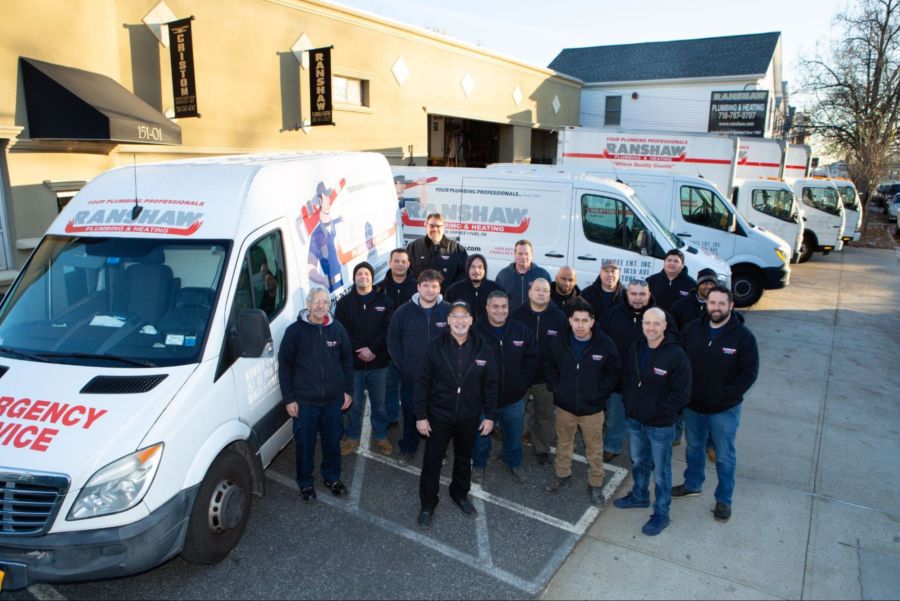What To Do If Your Water Heater Leaks
January 18, 2022

What should you do if your water heater leaks?
A leaking water heater doesn’t always mean it’s broken and needs replacement. However, it’s essential to fix any leaks as soon as possible because even small amounts of water can cause significant damage.
If you notice that your water heater is leaking, we recommend contacting a plumber for help ASAP.
However, there are a few things you can do immediately to prevent damage to your system and avoid a mess:
- Shut off the water supply
- Shut off power to your water heater
- Determine the location of the leak
This blog will go over the step-by-step instructions to reduce (and possibly stop) the leak. But first, we’ll go over a few of the most common causes of leaks.
Is your water heater leaking water? Trust the trained plumbers at Ranshaw Plumbing & Heating to get your water heater working efficiently. We’ve been reliably serving the Queens community for more than 60 years, and we look forward to serving you. Call us at 718.767.0707 today or schedule your water heater repair online.
Your water heater could be leaking for a variety of reasons, but some of the most common causes are:
- A pipe connection is loose
- The pressure is too high in the tank
- A faulty TPR valve
- A worn gasket
- A cracked tank
Shut off the water supply

Shut off the water supply valve on the cold inlet pipe.
When you notice water leaking from your water heater, the first thing to do is turn off the water supply.
Your water heater should have a shutoff valve on the cold inlet pipes. Look for your cold water pipe to locate the shutoff valve. To turn off the water supply, push the valve to the off position if it looks like a handle. This off position for this type of valve is when the handle is perpendicular to the pipe. If the valve looks like a dial or wheel, turn it clockwise to stop the water flow.
If you can’t find the shutoff valve, this article provides detailed instructions. Otherwise, we’re happy to help. Call us at 718.767.0707, and we’ll send one of our reliable, skilled plumbers to diagnose and fix the problem.
Shut off the power to the water heater

Use the gas line’s shut off valve to turn off the power to your water heater.
The next step is to turn off the power to your water heater.
If you have a gas-powered water heater:
- Locate the gas line leading to your water heater
- Find the dedicated gas shut off valve and switch it to the “off” position
- If you are unsure how to find your gas valve or if your gas valve is stuck and won’t turn, contact a professional for help. Never force a valve to close or turn a valve you are not sure about.
If you have an electric water heater:
- Locate your electrical panel
- Find the circuit breaker that’s connected to your water heater
- Flip the breaker to the “off” position to shut off power to your water heater
Need help turning off the power to your water heater? Call the pros at Ranshaw Plumbing and Heating at 718.767.0707.
Determine the location of the leak
After you’ve shut off the water supply and power to your water heater, you’ll want to try and find the source of your leak.
Water heaters can leak from a few different places and can vary depending on the type of water heater you have. We’ll cover the causes in more detail in the following sections.
If you have a tank water heater, some common causes of leaks are:
- A loose cold or hot water inlet/outlet connection
- A worn gasket or seal
- High pressure in the tank
- A cracked tank
Loose cold or hot water inlet/outlet connections can cause leaks. To determine if this is your issue, check the top of your water heater for two pipes. One is the cold water inlet, where cold water enters your tank, and the other is the hot water outlet, where hot water exits your tank and flows to your plumbing appliances.
Over time, the connections on these pipes loosen, causing water to leak around them. So, if you notice water leaking from the top of your tank, this could be why. You can try to tighten the connections yourself, but if the problem persists, call a plumber.
You can find worn gaskets or seals on the upper or lower heating elements on the side of electric water heater tanks and drain valves at the bottom of tanks. If this seems to be the issue, you’ll need to contact a professional to fix the problem.

T&P valves release water from your water heater.
Too much pressure in a water heater's tank can cause it to automatically release water as it tries to lower the internal pressure. When it does so, its Temperature and Pressure (T&P) relief valve releases water through a discharge pipe down the side of the tank into a drain. If you can see a steady flow of water coming from the discharge pipe, then your water heater is likely trying to reduce its internal pressure levels. You can locate the T&P valve on the top or side of the tank.
If you believe high pressure in the tank is the problem, contact a professional to see if your T&P valve needs replacement or repair.
Cracked tanks from corrosion, high pressure, or overheating can cause water to leak from your system. Unfortunately, if you have a cracked tank, there’s not much a plumber can do. In this scenario, you’ll likely need to replace your water heater.
Do You Need the Assistance of an Experienced Plumbing Company? Ranshaw Plumbing & Heating Can Help.

Contact the friendly, experienced plumbers at Ranshaw for your water heater needs.
Having trouble with your water heater, a critical plumbing system, can be a difficult dilemma as a homeowner. You’re in good hands with the expert plumbers at Ranshaw Plumbing & Heating. We’ll send a skilled plumber that will provide a professional recommendation so you can understand the best option to address your defective water heater. Call us at 718.767.0707 for immediate assistance. You can also request a water heater replacement estimate or schedule a water heater repair online.
